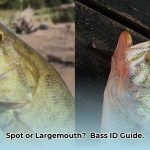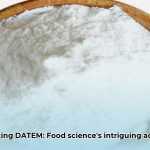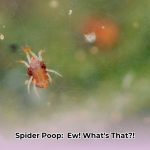Have you ever spotted a tiny, silver insect darting across your floor? Chances are, it was a silverfish. While these insects aren’t dangerous, they can be a nuisance, especially if their population grows unchecked. Understanding the silverfish diet is crucial for effective control and prevention. This guide provides a comprehensive overview of what silverfish eat, why they eat it, and how you can use this knowledge to keep them out of your home.
Decoding the Silverfish Diet
Silverfish are essentially tiny carbohydrate connoisseurs. Their diet primarily consists of starches and sugars, which provide them with readily available energy. This explains their attraction to common household items like paper, wallpaper, and glue. While carbohydrates are their main source of energy, protein also plays a crucial role in their diet, primarily for growth and development.
What Silverfish Crave: A Detailed Look
Here’s a breakdown of their favorite food sources:
- Starches/Carbohydrates: Silverfish have a particular fondness for polysaccharides, complex carbohydrates found in items like paper, wallpaper, book bindings, and even some shampoos. They also target starchy residues left in bathtubs or sinks.
- Proteins: While not their primary food source, protein is essential for silverfish. They obtain it from various sources, including dead insects, pet food, and even certain types of mold.
- Other Food Sources: Silverfish have a surprisingly diverse palate, extending beyond typical pantry staples. They can consume a variety of materials, including:
- Cotton, linen, and silk clothing, especially if starched or stained with sugary substances.
- Carpet fibers, human hair, and dandruff.
- Leather and synthetic fabrics (rarely, usually in damp environments).
- Shed skins (exuviae) – a form of self-cannibalism!
- Coffee grounds, likely due to their residual oils and carbohydrates.
- Rolled oats and other grains.
- Lace and other delicate fabrics.
The Science Behind Their Preferences
Silverfish have a specialized digestive system equipped to break down complex carbohydrates into simpler sugars. Interestingly, although they consume paper products, they don’t directly digest cellulose. Instead, they target the refined starches present within paper and other processed materials. Protein, much like in human diets, is essential for the growth and repair of their bodies, especially their exoskeletons.
Recognizing a Silverfish Infestation
Early detection is key. Common signs include:
- Tiny, irregular holes in paper products: Books, wallpaper, and photographs are particularly vulnerable.
- Yellowish stains: These can appear on fabrics and paper, often caused by silverfish excrement.
- Tiny black droppings: Resembling pepper flakes, these are often found near food sources.
- Translucent, silvery shed skins (exuviae).
- Sighting the silverfish themselves: While they are nocturnal, you might glimpse them scurrying away when you disturb their hiding spots.
Preventing Silverfish: Proactive Measures
- Humidity Control: Silverfish thrive in damp conditions. Use dehumidifiers in basements, bathrooms, and other moisture-prone areas. Ensure proper ventilation. Address any leaks promptly.
- Food Storage: Store food, especially dry goods, in airtight containers. Clean up spills and crumbs immediately. Keep pantry areas well-ventilated and dry.
- Seal Entry Points: Caulk cracks and crevices in walls, floors, and around pipes. Repair damaged screens. Seal gaps around windows and doors.
Controlling an Infestation: DIY and Professional Options
DIY Methods
- Sticky Traps: Place these near suspected silverfish activity areas.
- Boric Acid Baits: Mix boric acid with flour or sugar to create a bait. Exercise extreme caution with boric acid, especially around children and pets.
- Diatomaceous Earth: This non-toxic powder can dehydrate silverfish. Sprinkle it in areas where they travel. While generally considered safe, avoid inhalation.
- Natural Repellents: Some evidence suggests that certain scents, like cedar, cinnamon, and cloves, may repel silverfish. More research is needed to confirm their effectiveness.
Professional Pest Control
For severe infestations, consult a qualified pest control expert. They can effectively eliminate the problem with targeted treatments.
Should You Call a Professional?
| Feature | DIY | Professional |
|---|---|---|
| Cost | Lower | Higher |
| Effectiveness | Suitable for minor infestations | Best for large or persistent infestations |
| Time & Effort | Requires more personal involvement | Less time-consuming |
| Safety | Requires careful handling of substances | Professionals are trained in safe handling |
Silverfish Diet FAQs
- Do silverfish eat wood? While they don’t consume wood directly, they may feed on the glue and starches present in wallpaper paste, book bindings, or even the surface finishes of some wooden furniture.
- Are silverfish harmful? Silverfish are not known to bite humans or transmit diseases. However, they can cause damage to belongings and trigger allergic reactions in some individuals.
- What attracts silverfish? Besides food sources, silverfish are attracted to damp, dark environments. Clutter also provides ideal hiding spots.
Conclusion
By understanding the intricacies of the silverfish diet, you can effectively prevent and control infestations. Implementing the measures outlined in this guide will help you safeguard your belongings and maintain a pest-free environment. Remember, ongoing research continues to shed light on silverfish behavior and control methods. Staying informed about the latest findings can further enhance your prevention and control strategies.
- Hydro Extrusions USA Leads North American Aluminum Profile Solutions - December 28, 2025
- Hydro North America Leads Aluminum Extrusion Solutions Across Diverse Industries - December 27, 2025
- Hydro Extrusion North America Provides Custom Solutions Across Diverse - December 26, 2025
















